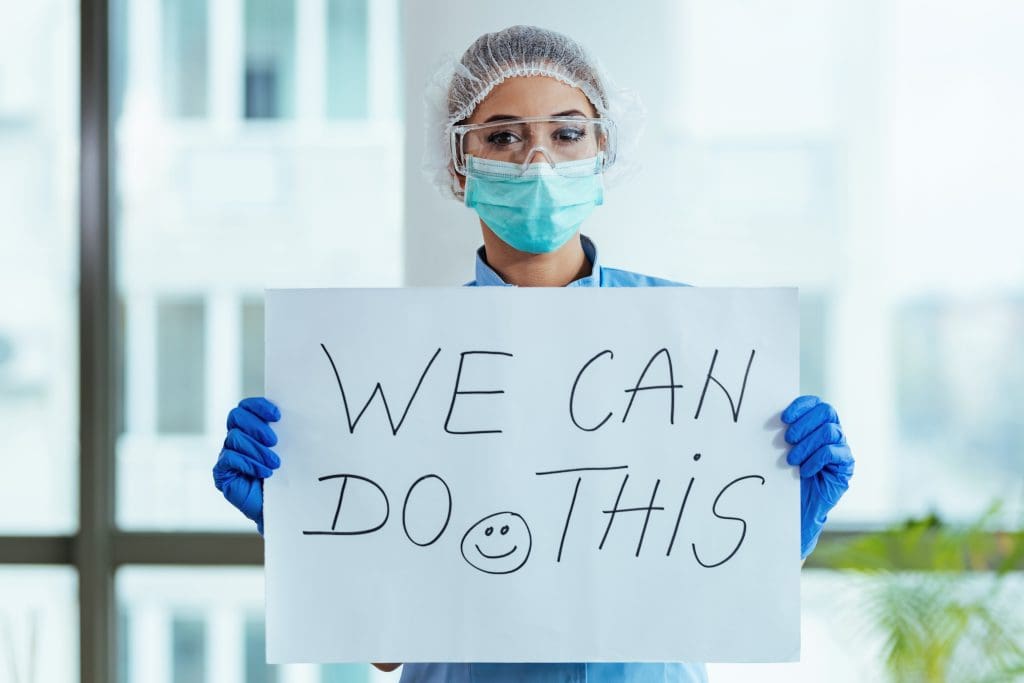During the COVID-19 pandemic, nursing schools across the nation have scrambled to change to remote learning. The rapid change has sparked a concern that quality learning and achievement of student outcomes may be compromised. Creative solutions to deliver alternative clinical, simulation, lab, and lecture courses are being used to comply with federal, state, and community guidelines. But even with creative solutions, shifting delivery of nursing education still leaves the question: Will future nurses be prepared for professional nursing practice after graduation?
Pre-pandemic norm
Before the COVID-19 pandemic, face-to-face instruction in nursing programs was the standard for most nursing programs, which fits with students’ preference for traditional, face-to-face instruction over a remote learning environment. Students were used to attending an on-campus orientation and meeting each week with a faculty member.
While in class, students could ask questions, and they received a re-cap of lecture information at the end of the session. Face-to-face lectures also included active learning activities. Laboratory and clinical experiences were achieved at the bedside, lab, and included high fidelity simulation activities. The students were immersed in almost daily lecture, labs, and clinical activities, receiving immediate feedback and robust experiential learning activities.
This environment helped build strong instructor connectedness, which is associated with improved learning outcomes.
What happened?
In March 2020, universities changed to remote course delivery. Nursing programs transitioned to a remote format to complete the spring 2020 semester. At this time, nursing programs began to deliver weekly lectures in a remote classroom. At the end of lectures, students could ask questions, but barriers to asking those questions existed. These barriers included the difficulty of instructors being able to offer interactive learning experiences in a virtual setting, faculty not having at-home internet bandwidth to support a large remote course, and inability to fully engage students in case studies and group assignments.
Lab and clinical requirements transitioned to virtual simulations, discussion boards, and other creative methods. The students did not have any face-to-face experiences, were not able to receive immediate feedback, and lacked true experiential learning activities.
Recognizing the pandemic would not be going away anytime soon, faculty began to adjust to the new norm of remote experiences for students. Conrad notes that faculty efficacy in remote delivery with technology, size of classroom, and type of feedback can negatively alter student outcomes, so faculty preparation was priority. Faculty took on the challenge of learning how to deliver nursing education in a variety of creative and innovative ways. They also learned how to teach students in lab at remote locations, created remote sessions for lecture, and incorporated many other high-quality teaching approaches. Faculty encouraged students to stay organized, reach out for support in different modalities, and increase critical thinking through more than just studying and lecture discussion. In turn, students started to adjust to the changes in education delivery.
The new norm
By fall 2020, nursing programs were still delivering many courses remotely, but also had the ability to have face-to-face opportunities for lab and clinical, which is still the case as the time of this article. Lectures are remotely delivered or prepared in advance and delivered through pre-recordings. Lab and clinical face-to-face experiences are partially available. The experiences in lab and clinical are done through a combination of remote skills practice and demonstration, face-to-face lab and clinical, virtual simulation, high fidelity simulation, and performing assessment and teaching with family members. .
Beginning in fall 2021, in person, face-to-face instruction will return for most nursing schools, but lab and clinical will be evolving and include a variety of creative teaching approaches and experiential learning for students. Because community partners are still dealing with overworked nurses, COVID-19 patients, and other stressors, clinical opportunities may remain limited.
What does the future hold?
While students have consistently reported feeling unprepared, our school has found that when comparing pre-pandemic levels to the new norm, students’ learning outcomes have improved, with standardized examination scores increasing significantly. This may be the case for other schools as well. Faculty’s dedication, training, and delivery of nursing courses in a remote learning environment have contributed to students’ success. Future nurses will be prepared to enter the workforce, possessing critical judgment skills.
Because community partners are still dealing with the overarching consequences in healthcare due to the pandemic, nursing education does not expect to return fully to the pre-pandemic norm in the near future. Face-to-face instruction will return, but lab and clinical will continue to include a variety of creative teaching approaches and experiential learning for students. The lab and clinical approaches taken due to the pandemic were successful in meeting student outcomes and provide students a variety of approaches to meet objectives. Face-to-face lab and clinical, virtual simulation, high fidelity simulation, and performance of assessment and teaching of family members will remain in place.
How to support graduates entering the nursing profession
While student outcomes have improved, graduates will still need support with communication when transitioning into the profession. Because communication has shifted to a mostly remote format for many students, the art of communication will need to be revisited by employers for therapeutic patient, family, community, and peer support. New graduates also will need more time to review and practice hands-on skills. Although students have learned these skills, their opportunities to master them have been reduced.
Overall, future nurses are still learning and will be prepared to enter the profession with support of the healthcare facilities. These future nurses will be prepared.
Jennifer Mundine is assistant dean (program director), and Renae Authement is interim department head of pre-licensure nursing for the school of nursing at Tarleton State University in Stephenville, Texas.
References
Conrad S. Student and instructor perceptions of feedback in asynchronous online learning: A mixed-methods study. 2016. ProQuest LLC. eric.ed.gov/?id=ED577197
Faulconer EK, Griffith JC, Wood BL, Acharyya S, Roberts DL. A comparison of online and traditional chemistry lecture and lab. Chem Educ Res Pract. 2018;19(1):392-97. doi: 10.1039/c7rp00173h
Martin F, Wang C, Sadaf A. Student perception of helpfulness of facilitation strategies that enhance instructor presence, connectedness, engagement and learning in online courses. Internet High Educ. 2018;37:52-65. doi: 10.1016/j.iheduc.2018.01.003


















